Want to know how to safely shoot a handgun?
We’ll go over the different types of trigger actions and parts of a handgun. Plus, how to safely load and unload your firearm.
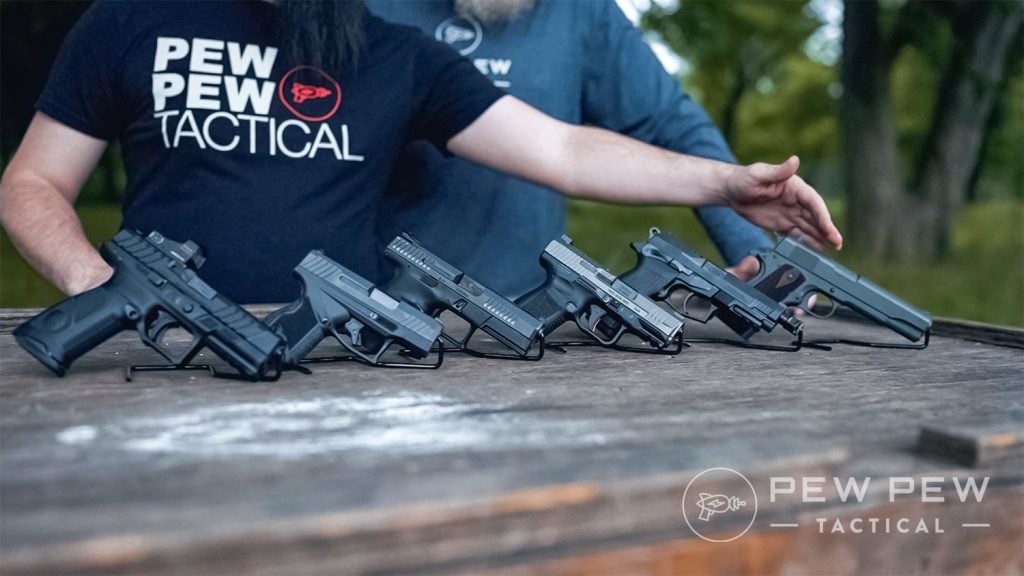
But before we do, now’s a good time to review our safety rules.
- All guns are always loaded
- Never let the muzzle cover anything you are not willing to destroy
- Keep your finger off the trigger until your sights are on the target
- Be sure of your target and what is beyond it
Table of Contents
Loading…
Step-by-Step Instructions: How to Shoot a Handgun
Step 1: Understand Trigger Actions & Handgun Parts
There are many types of trigger actions, but here are what we consider the three main ones for modern handguns. Don’t worry if just reading about the actions is confusing, we’ll have video examples too.
Single Action
- Each trigger pull only drops the hammer — you have to manually cock it first.
- Seen in guns like the 1911 and Browning Hi-Power.
- The hammer is cocked when racking the slide.
- Typically includes external safeties like a thumb and grip safety.
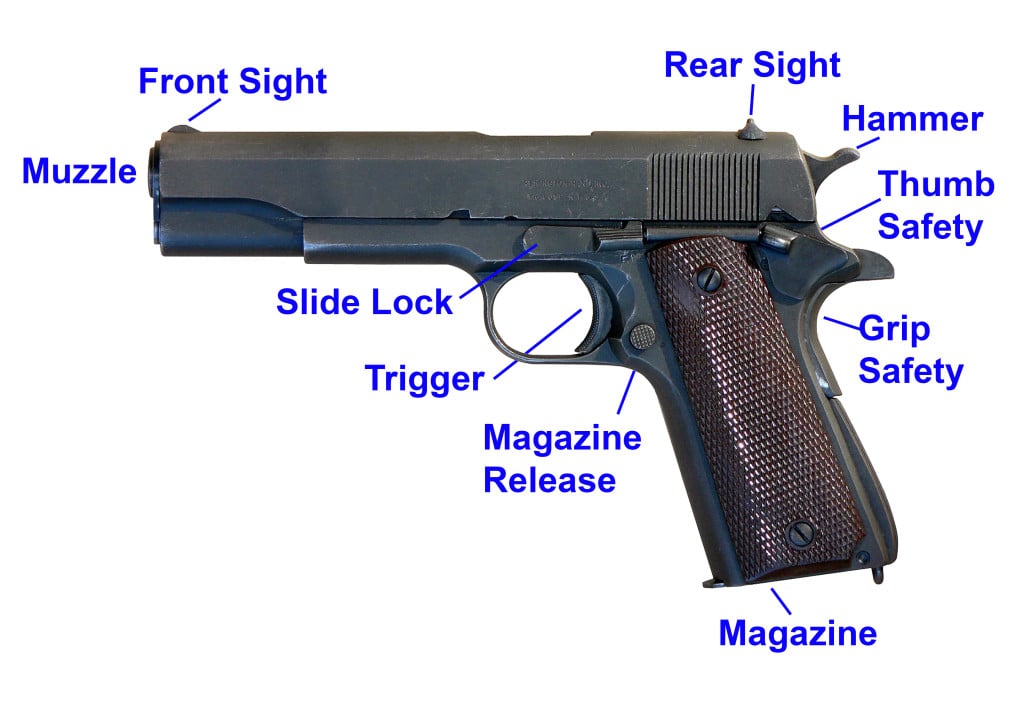
Double Action
- Trigger pull both cocks and drops the hammer.
- Heavier, longer first shot; lighter subsequent shots.
- Includes DA/SA guns like the Beretta 92FS and most Sig Sauers.
- Features a “de-cocker” for safe carry with the hammer down.
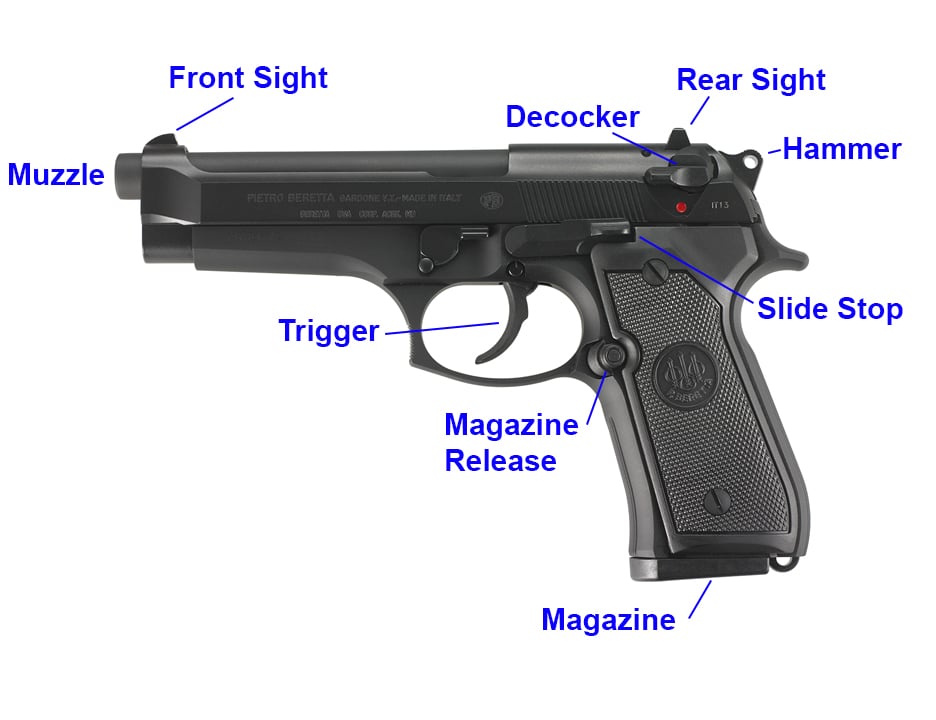
Striker Fire
- No external hammer; firing mechanism is inside.
- Pulling the trigger completes the cocking and firing cycle.
- Trigger pull is consistent each time.
- Common in Glocks, Smith & Wesson M&P, and Springfield XDS.
- Features internal safeties and a trigger blade safety.
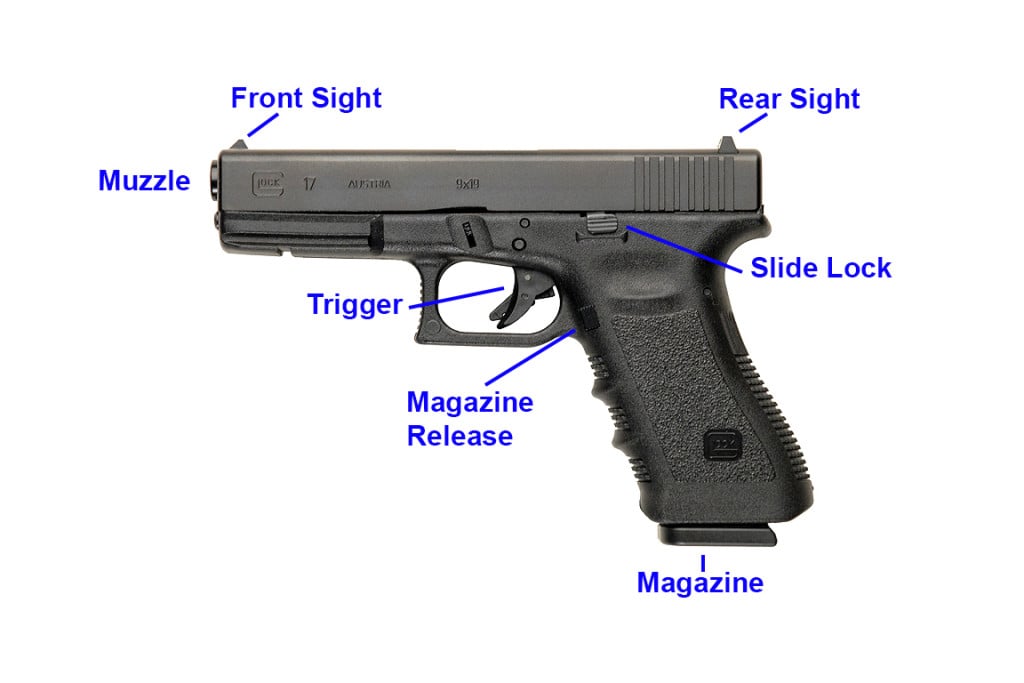
Step 2: Learn How to Load & Unload Your Handgun
Here’s a great video of how to load and unload a Glock pistol.
- Most pistols lock back the slide once the last round is fired.
- While the video shows a Glock, the same principles apply to most pistols.
Step 3: Master Proper Handgun Grip
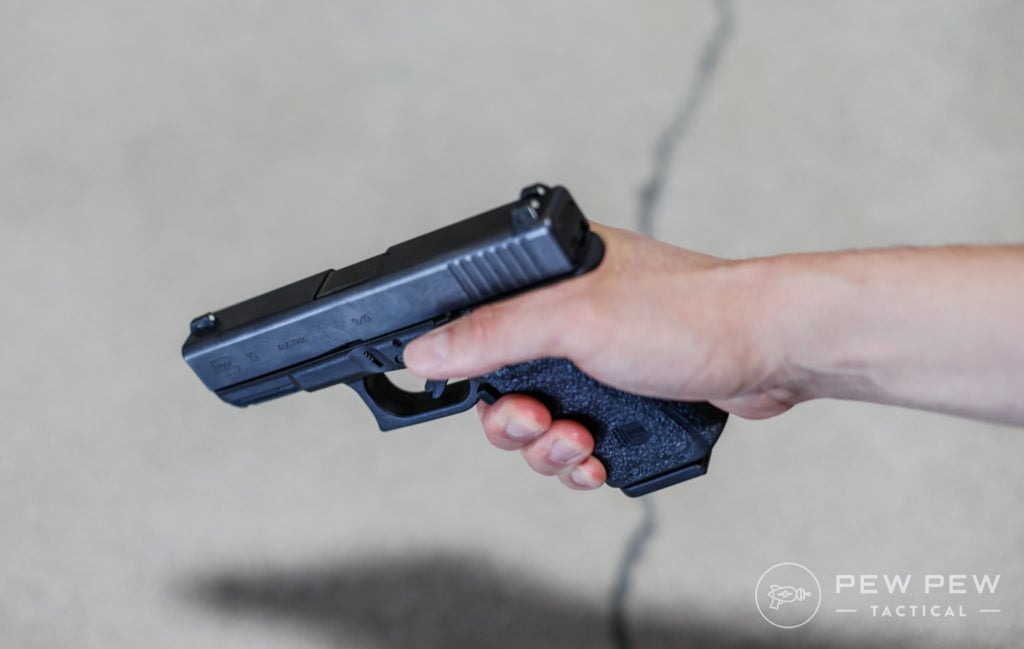
- Use a strong grip to control recoil and prevent finger movement.
- Place the web between your thumb and trigger finger as high on the grip as possible.
- Keep your forearm aligned with the slide’s movement.
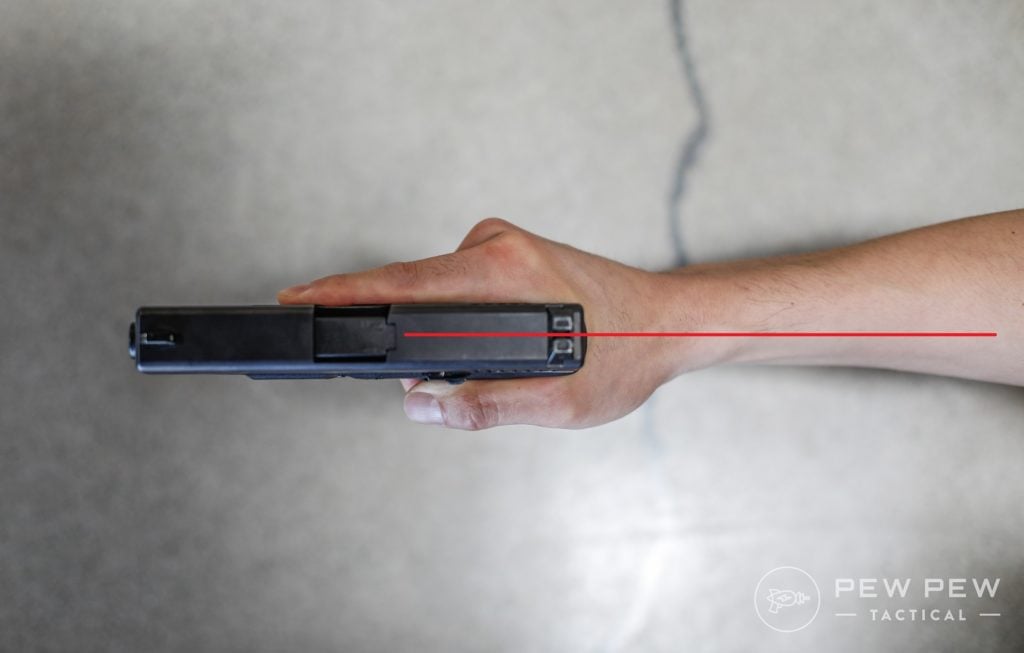
Support Hand Grip
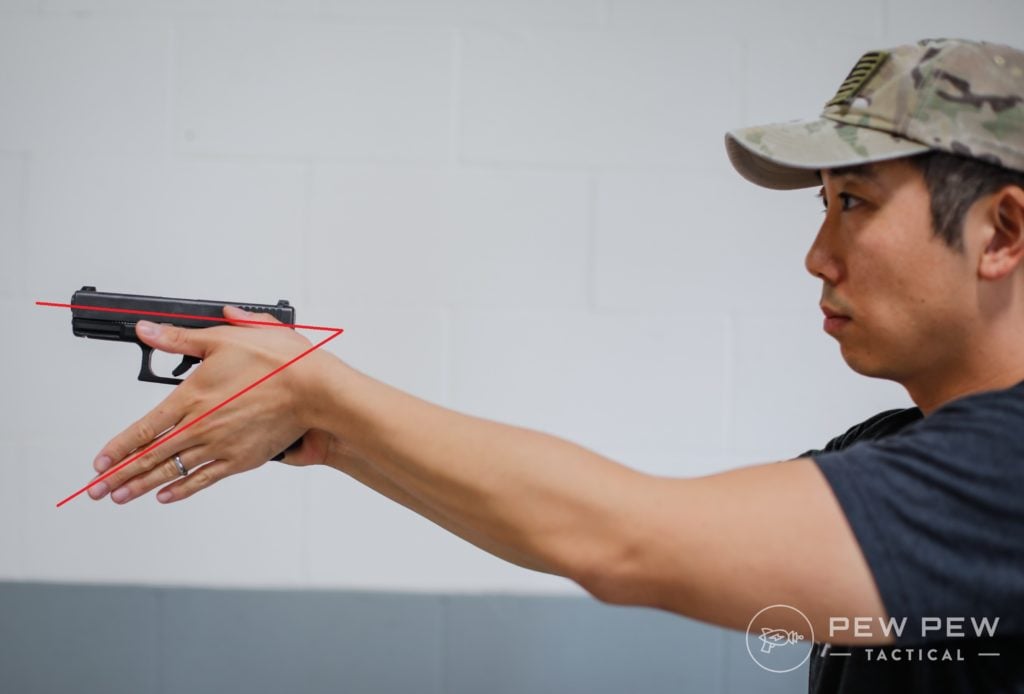
- Fill the empty space on the grip with your support hand.
- Check for a ~45-degree wrist angle.
- Thumb placement is up to you — find what feels natural.
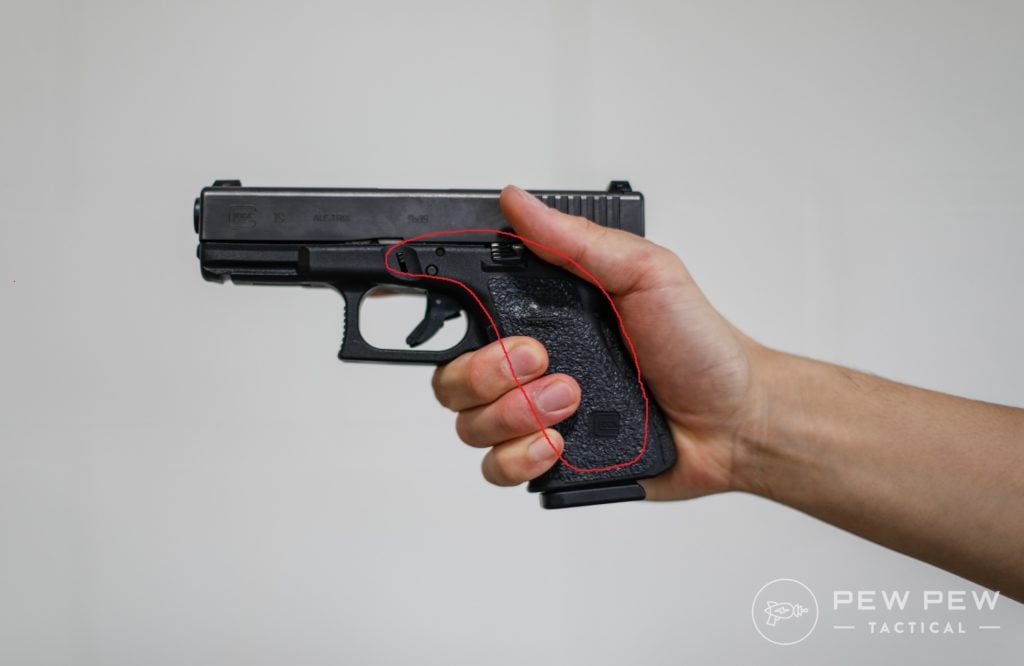
Examples:
- Thumbs up position (often preferred)
- Thumbs down position
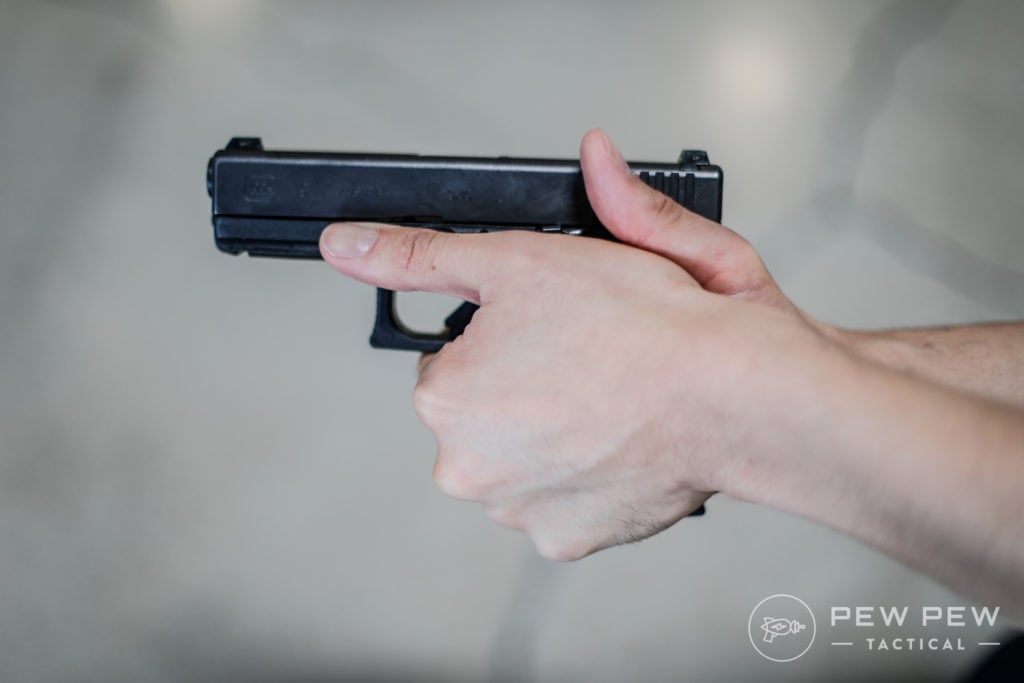
Step 4: Improve Your Trigger Pull
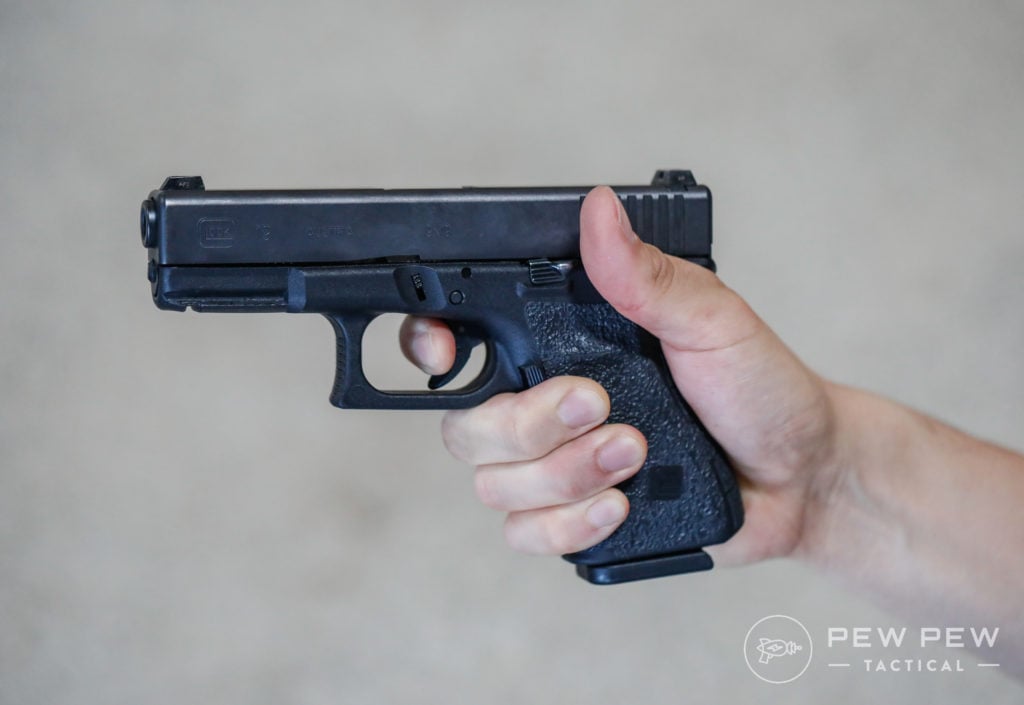
- Use what gives you best leverage and least movement.
- Pull the trigger slowly so the shot surprises you — this helps reduce flinching.
- Experiment with finger placement: from fingertip to the first joint.
Common Mistakes to Avoid
- Improper Grip – Failing to get high on the grip or not filling space with your support hand can reduce control.
- Jerking the Trigger – Pulling too fast or inconsistently introduces movement and throws off accuracy.
- Poor Stance Alignment – Not aligning your forearm with the slide’s travel direction reduces stability.
FAQs
Q: Can I use this guide with a revolver?
A: This guide is focused on semi-automatic handguns. Revolvers operate differently, especially in how they load and cycle rounds.
Q: What if my slide doesn’t lock back after the last round?
A: Check your grip — you might be “riding the slide” or the slide stop lever. It’s also possible your magazine spring is weak.
Q: How long does it take to get comfortable with shooting?
A: With regular dry-fire practice and live fire, most shooters see a noticeable improvement in 2–4 weeks.
Meet the Experts
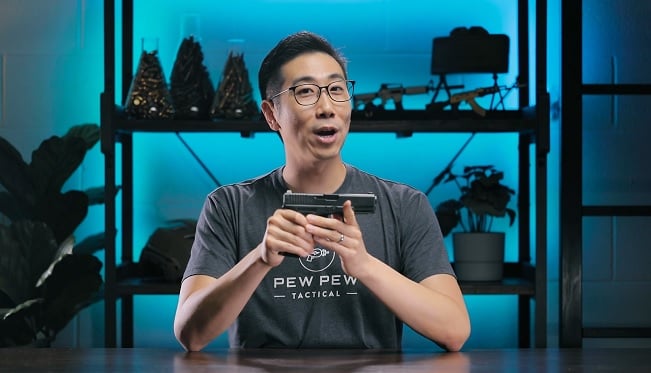
This article was put together by Pew Pew Tactical CEO and Founder Eric Hung. In addition to founding Pew Pew Tactical as a place for shooters to learn, he’s also an NRA-certified pistol instructor and a USPSA/3-Gun/NRL22 competitor. Eric has also researched and written over 250 articles on firearms, training, gear, and just about everything else related to firearms.
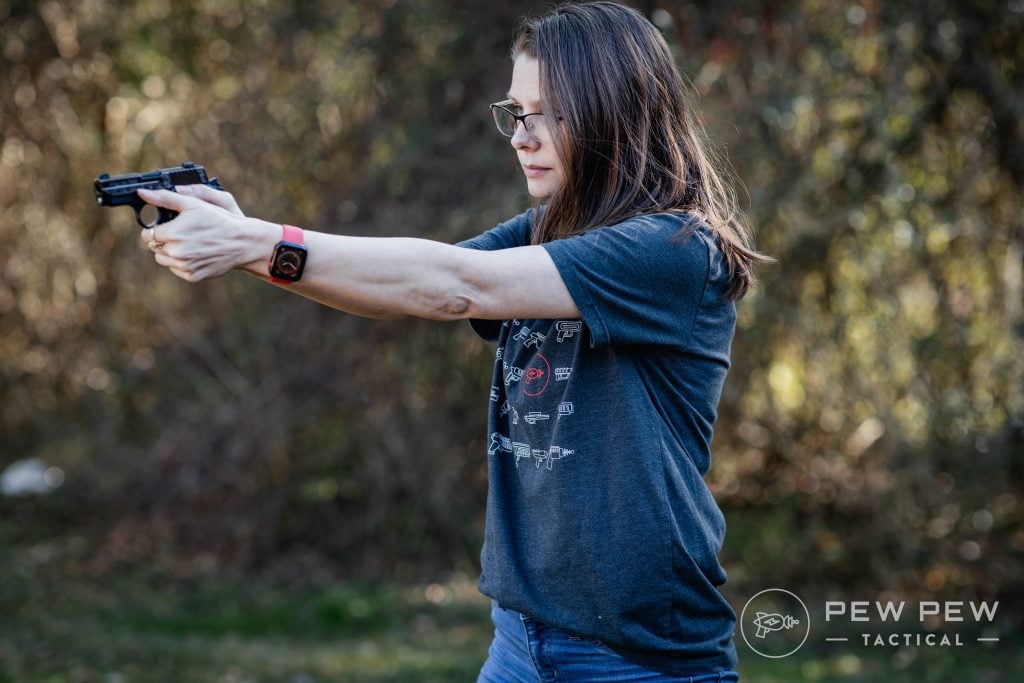
Editor-in-Chief Jacki Billings runs our experienced team of reviewers. She is a member of the Society of Professional Journalists, ACES: Society for Editing, and the Professional Outdoor Media Association. Additionally, she is an NRA-certified Pistol Instructor and former Concealed Carry Instructor. Jacki has a bachelor’s degree in journalism and has worked as a media professional for close to 20 years, specializing in gun media for almost 10 years. She uses her professional journalism and editing experience to set testing protocols and editorial standards for Pew Pew Tactical.
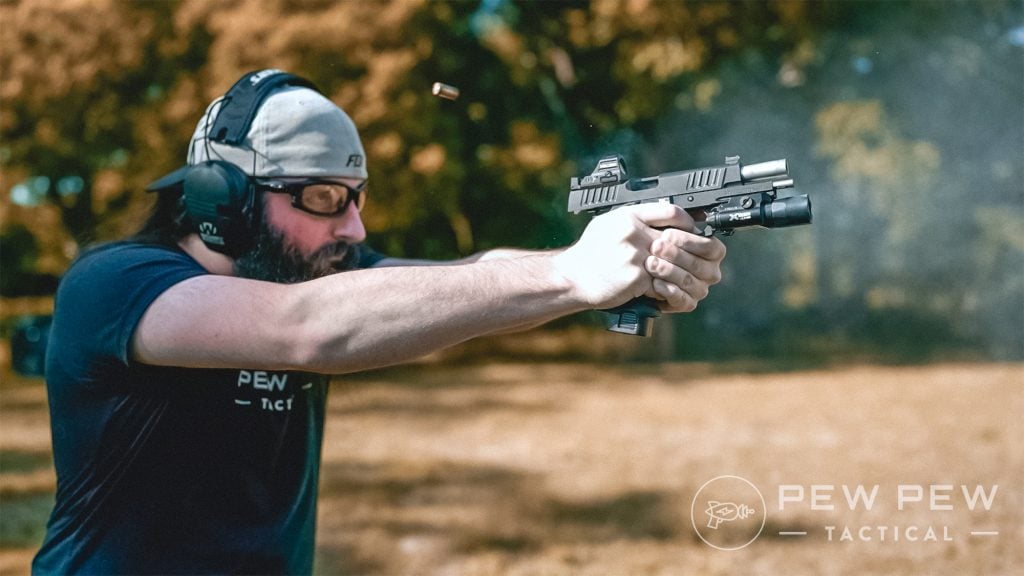
Also editing this article is Wyatt Sloan, Editor. Wyatt is an NRA and USCCA certified instructor with previous experience as a competitive shooter. Wyatt personally owns over 200 firearms and has 10 years of home-based FFL firearm sales. He has used his extensive experience with firearms at large to test guns for Pew Pew Tactical — evaluating them based on our standards and metrics.
Final Thoughts & Next Steps
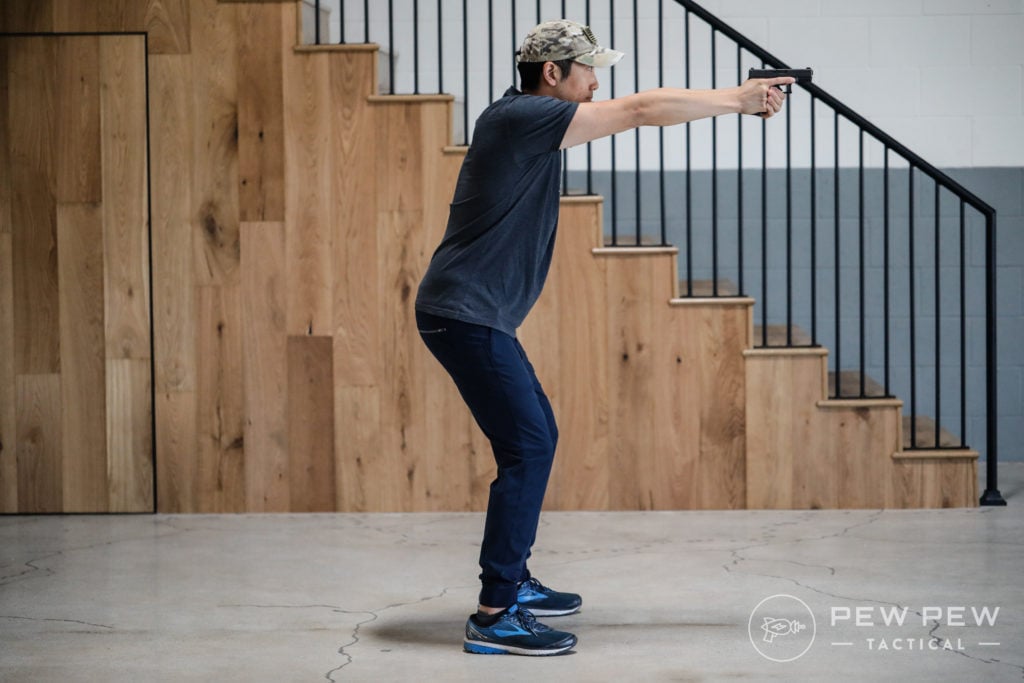
Now that you know how to properly shoot a handgun, it’s time to hit the range and practice safely!
Want to learn more? Check out our Beginner Handgun Course for more in-depth video lessons without the attitude. Or dig into our most popular article: [How to Shoot More Accurately].
Additional Learning
- Beginner Handgun Course: Sometimes video is the best way to learn. This course covers everything important without the attitude.
- How to Shoot More Accurately: Our most popular guide.
LATEST UPDATES
- April 2025: Complete revamp of article
- June 2024: Added videos and additional info/pictures throughout.

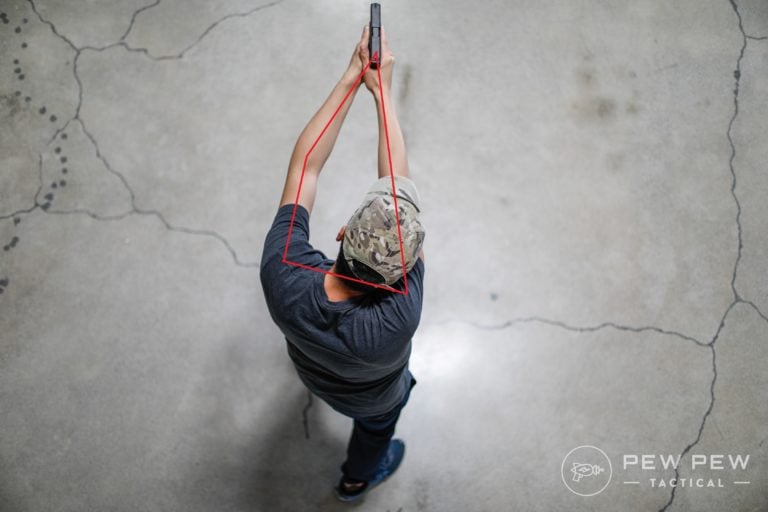







8 Leave a Reply
Once again, no love for the revolver crowd.
Pity, since many new shooters are more familiar with the manual of arms on a revolver than any pistol made.
This particular article was directed at those with pistols but we have an article on revolvers!https://www.pewpewtactical.com/how-to-shoot-revolver/
Thanks for the link, Jacki
Haven't you heard: one of the basic gun-handling rules is to "keep your finger off the trigger until your sights are on the target?" Don't be setting a bad example for others!
Lols, you got me. Maybe I placed it there to make sure you guys weren't sleeping on the job!
I forgot to add,,, Thank you for all the helpful info you share.
Love the website.
I'm new to owning firearms. I've been 'self tutoring' online. Also new to living in Coconino County Arizona. I could be wrong but this state seems to have a welcoming vibe in regards to firearms. Which I love since being raised in an old school military family. In need of a Mentor slash friend that knows firearms though. Maybe the LGS has some ideas. Ya mon....
Thanks Robert! Definitely heard that AZ is very gun friendly of a state.